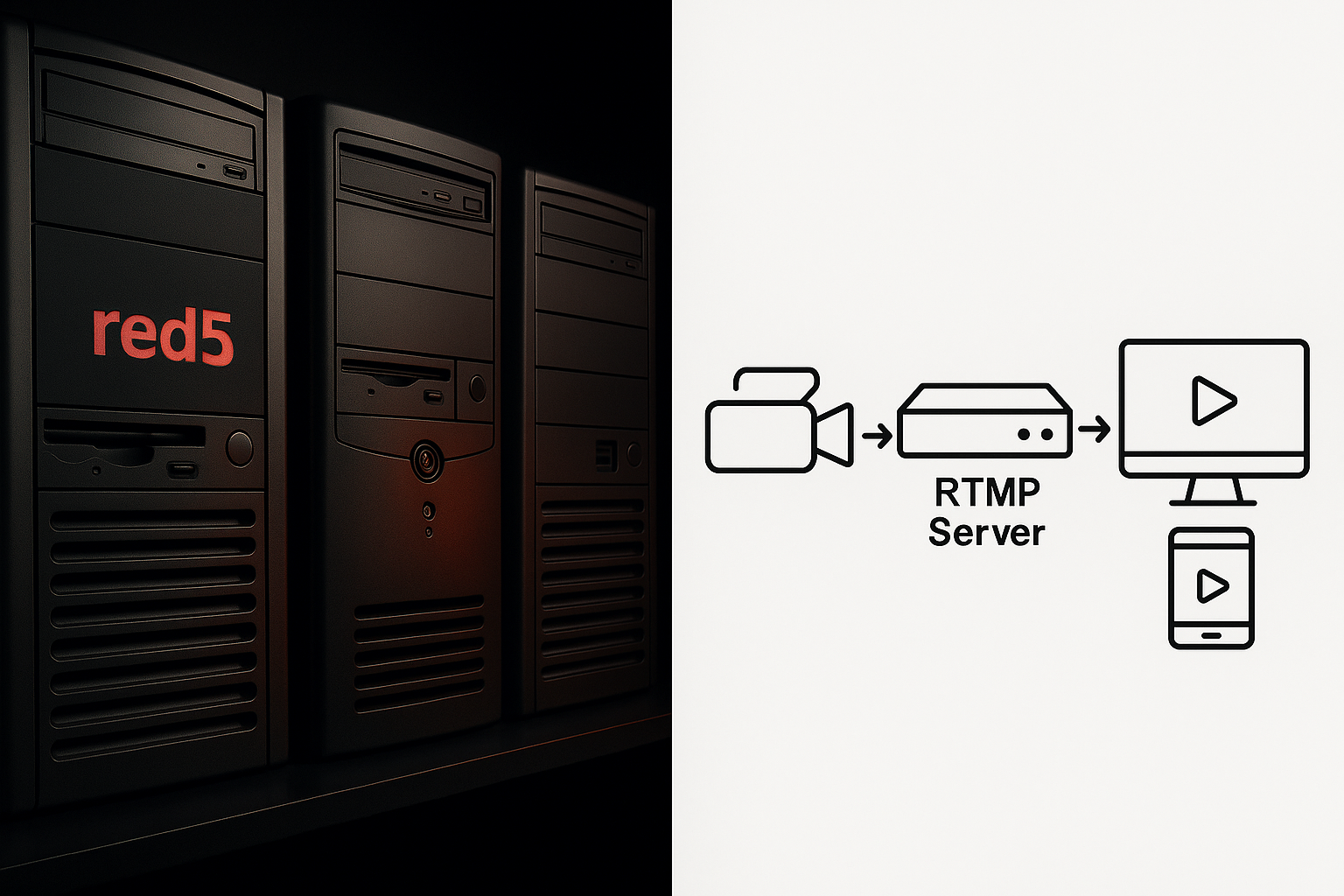Live streaming as we know it today owes a lot to open-source innovation. Long before social media platforms turned “go live” into a button, developers were experimenting with technologies like Red5, FFmpeg, and RTMP (Real-Time Messaging Protocol) to broadcast video over the internet. This is the story of how those early servers evolved into the high-performance streaming systems we rely on now.
What was Red5, and why did it matter?
Back in the mid-2000s, when Flash ruled the web, Red5 emerged as a community-driven alternative to Adobe’s closed streaming technology. Built in Java and open to everyone, Red5 allowed developers to host video chats, webcams, and live feeds without licensing restrictions.
At the time, bandwidth was expensive, and streaming was primitive. Yet Red5 made it possible for small companies and independent creators to build live platforms long before YouTube Live or Facebook existed. Many early video chat sites and live education systems were powered by Red5 servers.
But the internet was changing fast. Flash began to fade, mobile devices became dominant, and the demand for adaptive, low-latency streaming grew. That’s where RTMP and later Wowza and NGINX RTMP stepped in — modernizing the foundation that Red5 created.
How did RTMP and Wowza change the industry?
RTMP (Real-Time Messaging Protocol) became the backbone of most live streaming systems. Originally designed by Macromedia and later adapted by Adobe, RTMP was fast and simple — perfect for real-time delivery between encoders and servers.
When Wowza entered the scene, it re-engineered RTMP into a robust, enterprise-grade system. It supported adaptive bitrate streaming, transcoding, and multi-protocol delivery, making it compatible with HLS, MPEG-DASH, and mobile devices. This flexibility allowed broadcasters to reach global audiences without relying on Flash.
Later, NGINX RTMP, an open-source module for the popular web server NGINX, offered an affordable way to run live streams at scale. Together, these technologies built on Red5’s pioneering work — faster, more stable, and far easier to manage.
If you want to see how modern RTMP hosting evolved, visit FFmpeg-Hosting.net, where you’ll find optimized RTMP servers with bandwidth allocation and 24/7 uptime.
For larger broadcasters, Red5Server.com continues the tradition with shared and dedicated RTMP hosting, using Wowza and NGINX to deliver HD streaming with built-in ad monetization tools.
Why does FFmpeg still matter today?
Even though FFmpeg is not a server on its own, it remains the universal toolkit for encoding and processing video before streaming. It converts formats, compresses media, and adjusts bitrate dynamically — acting as the bridge between your video source and your RTMP or Wowza server.
Broadcasters still use FFmpeg to prepare content for live automation systems, IPTV, and TV stations. Combined with Wowza or NGINX RTMP, it creates a full streaming workflow that’s lightweight, scalable, and efficient.
What can we learn from Red5’s legacy?
Red5 proved something that remains true today: open-source projects often lead the innovation that commercial platforms later build upon. Without Red5, there might never have been Wowza, or the powerful, cloud-based streaming ecosystem we rely on now.
Even as technology advances, the Red5 spirit lives on in how developers collaborate, share code, and push for performance improvements in streaming software.
Modern providers like Red5Server.com honor that legacy by maintaining flexible and affordable RTMP hosting that’s accessible to anyone — whether you’re launching a church stream, a 24/7 TV station, or an interactive live event.
For technical background, you can explore the Wikipedia article on Real-Time Messaging Protocol, which explains how RTMP evolved and why it continues to power thousands of live broadcasts across the web.

